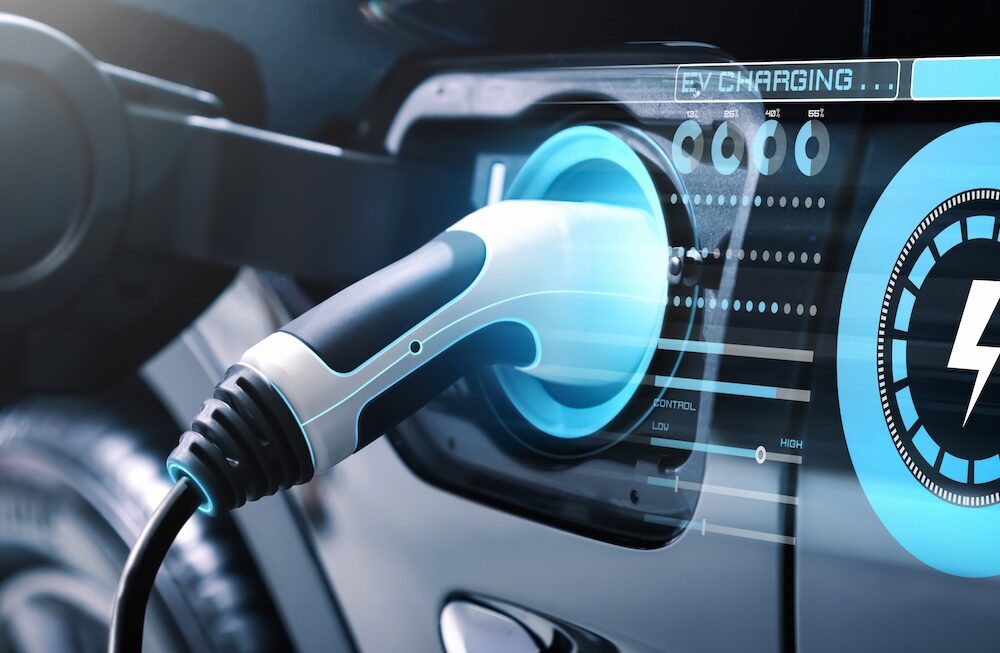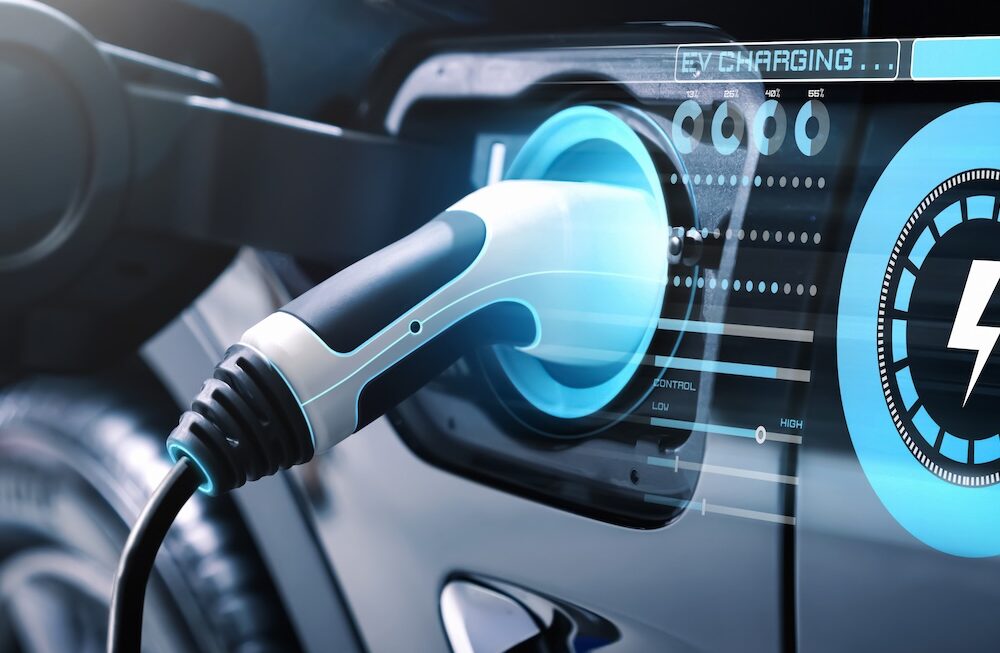In the already complicated landscape of automotive patent strategy EVs (electric vehicles), have introduced a new layer of complexity.
From fewer than 9,000 patent family publications in the year 2000, statistics from WIPO show that the land transport sector – including cars, trucks, trains, buses and related technologies – generated 99,500 new patent families in 2023.
Over half of these (50,572) related to ‘sustainable propulsion’ including battery EVs, solid-state batteries, electric propulsion systems, motors, gearings and so on. This is a growth rate of 11% since the start of the century, which has accelerated in recent years.
These patent trends are an indicator of the rapid rate of development in the field of clean transport, and in many cases of the offensive and defensive approaches being taken to electric vehicle intellectual property management by motor manufacturers worldwide.
In this article, we will look at those tactics in more detail, along with some of the main ways to monetise EV technology in the present global climate.
Defensive vs offensive patent tactics
First of all, let’s make sure that we understand the difference between defensive and offensive tactics in electric vehicle IP management.
These are two of the key drivers of automotive patent trends. They can influence whether a patented technology ever makes it to market, and in which geographic jurisdictions.
As motor manufacturers continue to make significant investments into developing new EV technologies, a mix of defensive and offensive patent tactics can be crucial to protect the financial outlay and the potential for future monetisation of emerging EV tech.
What are defensive patent tactics?
Defensive patenting generally means filing patents early to discourage other manufacturers from attempting to use a specific technology. You can think of defensive patents as a ‘shield’ to protect your investment.
By filing a patent application as early as possible, you prevent similar technologies from being used commercially. You can also begin to establish a portfolio of patents and applications that can be used as prior art to defend against the grant of later filed patents and potential litigation by competitors, if necessary.
A substantial defensive patent portfolio can be a valuable bargaining chip. If a competitor sees significant potential in one of your patented technologies, they may enquire about licensing the technology detailed in the patent. Licensing arrangements often include an upfront fee and continuing royalty arrangement.
What are offensive patent tactics?
Offensive patents are the ‘sword’ that accompanies the shield. They are a way to restrict the activities of your rivals, grow your market share and to maximise revenue generation.
Offensive tactics include monitoring the market and litigating against anyone you believe has infringed your patent rights.
While this can create commercial problems for competitor businesses, it is also a common technique to raise revenue by requiring rivals to pay a licensing fee to continue their work in a field where you hold patents.
Defensive vs offensive patent strategies – which is best?
The above defensive and offensive patent strategies exist alongside one another; it is not a case of choosing one approach or the other.
Rather, holding an extensive portfolio of patents enables you to choose from the available tactics as appropriate in any given circumstance.
This is especially true in terms of the automotive patent strategy EVs require, due to the large amount of new research taking place by many different types of businesses all over the world.
Patent collaborations
Patent collaborations are a way to ensure that the industry as a whole can continue to develop using patented technologies, without the need to negotiate on a use-by-use basis with the rights holder.
Famous examples of this include the home entertainment formats DVD and Blu-ray, which were developed and popularised by groups of consumer electronics brands that worked together and pooled their patent rights.
A similar approach is a hallmark of automotive patent licensing trends and especially of electric vehicle IP management, where innovations like efficient battery storage and standardised charging interfaces allow for industry-wide evolution.
The most visible of these is the Combined Charging System, or CCS. This emerged from the work of the global Charging Interface Initiative (CharIN) and means that – with just a handful of common connector types – EVs can be plugged into compatible charge points worldwide.
Types of EV patent collaboration
As a specialist subset of a broader automotive patent strategy, EVs contain IP from multiple rights holders, making use of several different methods to grant usage rights to each motor manufacturer:
Patent Licensing
Agreeing usage rights via a licence, which may be time-limited or otherwise restricted in scope. Licences can be granted to a single company (exclusive) or to multiple companies at the same time (non-exclusive).
Cross-Licensing Agreements
Cross-licensing agreements are an exchange of rights to accelerate innovation and reduce the risk of litigation. This might be in a field where different types of patents overlap, for example the hardware used in an EV’s charging system, and the software that controls the charging process.
Patent Pools
One of the most flexible ways to encourage innovation via collaboration, patent pools are an agreement between multiple organisations to facilitate fast and reliable access to protected IP. This can reduce costs and time delays and ensure that specific technologies can be used across the automotive industry.
Technology Partnerships
Technology partnerships develop new tech together and co-own any resultant patent rights. This is often seen relatively early in the history of an emerging market or sector, where the main players recognise that rapid progress is the best way to minimise risk and maximise returns.
The monetisation of EV technology
One way to enable progress to be made is to monetise existing developments. Research can be expensive and those who develop new technologies are motivated to recoup that investment by commercialising their innovations.
By implementing a structured approach to automotive patent strategy EVs offer substantial opportunity for monetisation, including cutting-edge tech like:
- Lithium-ion batteries
- Solid-state batteries
- Battery recycling
- Ultra-fast charging systems
- Thermal management
Problem-solving is a frequent motivating feature of automotive patent licensing trends; for example, new ways to maximise the vehicle’s range from a single charge, or ways to prevent lithium-ion batteries from overheating.
Types of EV monetisation patents
Electric vehicle IP management often combines several types of patents or patent claims as a way to monetise each category of innovation:
- Product Patents: Protecting innovative products and devices such as new, more efficient batteries with greater total capacity.
- Process Patents: Creating exclusivity of new innovative processes e.g. in manufacturing, production or materials recycling.
- Use Patents: Closely related to process patents and govern the way protected IP is used e.g. in battery manufacture, autonomous vehicle systems etc.
Importance of International patent filings
The EV market has global reach, so comprehensive electric vehicle IP management must make good use of international patent filings to protect valuable innovations in all major markets.
Because of this, EV patents are typically filed in multiple jurisdictions, e.g. Europe, China, Japan, India and the USA where there are major markets and manufacturing sites.
Where the same technology is patented in multiple locations, this is known as a ‘patent family’. By referring to patent families – not individual patents, which can inflate overall figures – it is possible to track automotive patent trends more accurately.
Navigating thickets, litigation, blockers and challenges
When it comes to the types of common obstacles seen in automotive patent strategy, EVs are no exception, and it’s important to be aware that these blocks, challenges and thickets exist.
Some of the main areas in which you could benefit from professional EV patent advice include:
International Enforcement
Ensuring protected IP is not used elsewhere in the world. Enforcement is a crucial element in a patent strategy, to exercise your rights as the owner of potentially very valuable IP, which may have been very costly to develop.
Patent Thickets
A patent thicket emerges when competing patents around a particular technology discourage innovation and encourage litigation. While it’s reasonable to protect your IP, thickets can create a large degree of risk surrounding the use of important technologies and processes and ultimately do not benefit the consumer.
Speed of Innovation
Technologies can quickly become obsolete in a rapidly evolving sector. Some of the most visible examples of this are EV charging standards (e.g. Type 1 and Type 2 chargers, compared with CCS charging points).
It’s important to protect the value of your patents, and this should include strategic licensing so that your technology remains relevant for as long as possible.
If you’d like to find out more about automotive strategy, or looking for a professional team to assist with your own IP protection, get in touch with Bailey Walsh using our simple form here, or call our HQ on +44 (0)113 208 9962






